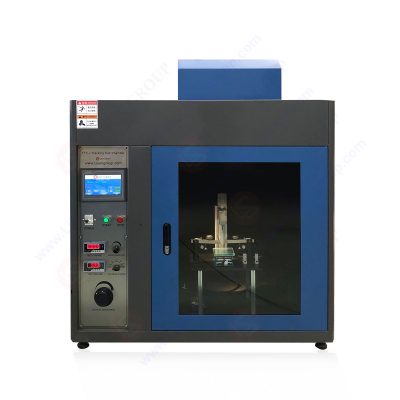
Introduction:
Leakage tracking test equipment plays a pivotal role in the production and quality supervision of electrical products. Understanding the concept of leakage tracking test equipment begins with recognizing the significance of leakage tracking testing. Various solid insulation materials in electrical products can form conductive channels under the influence of electric fields and contaminated liquids, leading to electrical short circuits, corrosion, and even fire hazards. Especially in industries such as railways, petroleum, chemicals, coal mining, marine, aerospace, and telecommunications, high demands are placed on the fire and explosion resistance of products. The leakage tracking index test, evaluating the ability of solid insulation materials to withstand the combined effects of electric fields and contaminated electrolytes, is widely employed. This test is incorporated into the regulations of organizations like Underwriters Laboratories (UL) in the United States and Lloyd’s Register in the United Kingdom, establishing it as a crucial standard for assessing the fire resistance of electrical insulation materials.
Understanding the Leakage Tracking Test Equipment:
Leakage tracking test equipment is specifically designed for conducting leakage tracking test to simulate the conditions of insulation materials in humid environments and determine their resistance tracking index and comparative tracking index.
Working Principle of Leakage Tracking Test Equipment:
The operation of leakage tracking test equipment involves several steps. Initially, the device drips a predetermined concentration of electrolyte between two platinum electrodes on the surface of the test specimen at specific intervals and droplet volumes. Subsequently, the performance of the specimen is evaluated by measuring the test voltage it withstands under a specified number of droplets.
TTC-1 Tracking Test Chamber
Operating Guidelines for Leakage Tracking Test Equipment:
Connect the device under test to the leakage tracking test equipment and set appropriate voltage and current parameters according to the equipment specifications.
Initiate the leakage tracking test using the equipment.
After completing the test, calculate the Comparative Tracking Index (CTI) and Proof Tracking Index (PTI) of the tested electrical product based on the test results to assess its insulation performance and safety.
Practical Functions of Leakage Tracking Test Equipment:
Leakage tracking test equipment is indispensable in the production and quality supervision of electrical products. It effectively detects the resistance tracking index of electrical products and serves as both a material acceptance criterion and a method for quality control of materials and components. Additionally, it efficiently measures the comparative tracking index of materials, serving as a vital parameter for characterizing material basic properties and comparing performance.
Conclusion:
Leakage tracking test equipment, comprising power modules, measurement modules, display modules, and control modules, is a critical component in electrical product manufacturing. Through leakage tracking tests, it evaluates the resistance tracking performance of materials in electrical equipment operating in humid environments, ensuring the quality of electrical products and consumer safety. It is firmly believed that the application of leakage tracking test equipment will provide greater assurance for the development of the electrical industry and consumer safety.
https://www.lisungroup.com/news/company-news/exploring-leakage-tracking-test-equipment-essential-tools-for-product-safety-and-leakage-tracking-test.html
.jpg)
Comments
Post a Comment